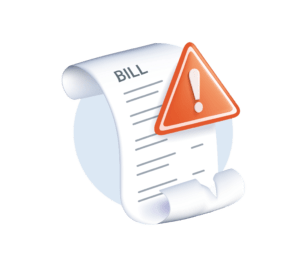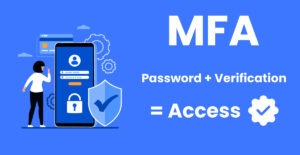
Invoice fraud is a significant threat to businesses of all sizes, resulting in financial losses, reputational damage, and operational disruptions. This fraudulent activity can take many forms, from sophisticated cyber schemes to simple scams, making it essential for companies to understand how these frauds work and how to protect themselves. In this post, we will explore various types of business invoice fraud, provide real-world examples, and offer strategies to help prevent it from happening to your organization.
What is Business Invoice Fraud?
Invoice fraud occurs when a scammer tricks a business into paying for goods or services that were never provided or into paying the wrong entity. This can happen through various methods, including phishing emails, fake invoices, or compromised email accounts. The goal is to deceive the business into transferring funds to the fraudster’s account instead of the legitimate vendor or service provider.
Types of Business Invoice Fraud
1. Employee Impersonation
Employee impersonation occurs when a fraudster poses as a legitimate employee within a company, usually someone with authority, such as a CEO, CFO, or Accounts Payable Manager. The impersonator sends an email or other communication to the accounting department, requesting a payment or transfer of funds.
Example:
A scammer, posing as the company’s CEO, sends an urgent email to the finance department, requesting an immediate wire transfer to a new supplier. The email appears legitimate, complete with company branding and a familiar tone. Trusting the email, the finance department processes the payment, only to realize later that the request was fraudulent.
2. Invoice Hijacking
Invoice hijacking happens when a legitimate invoice is intercepted by a fraudster, who then alters the payment details. The victim company believes they are paying a legitimate invoice, but the funds are diverted to the fraudster’s account.
Example:
A supplier emails a legitimate invoice to a company. A hacker intercepts the email and changes the bank account details on the invoice. When the company processes the payment, the money is sent to the fraudster’s account instead of the supplier’s.
3. Phishing Scams
Phishing scams are fraudulent attempts to obtain sensitive information, such as usernames, passwords, and financial details, by disguising as a trustworthy entity in electronic communication. These scams often target employees who handle payments.
Example:
An employee in the accounts payable department receives an email that appears to be from a known supplier, asking them to log in to a new payment portal. The link in the email leads to a fake website designed to capture login credentials. Once the fraudster has access, they can manipulate invoices or direct payments to their accounts.
4. Fake Supplier Invoices
In this scam, fraudsters send fake invoices to a company, hoping that the accounts payable department will process the payment without verifying the legitimacy of the invoice.
Example:
A company receives an invoice from a supplier they don’t recognize. The invoice looks legitimate, but the supplier doesn’t exist. If the accounts payable department processes the payment without verifying the invoice, the fraudster receives the money.
5. Change of Bank Details Fraud
This type of fraud involves a fraudster impersonating a legitimate supplier or service provider, informing the company that their bank details have changed. The fraudster provides their account details, and when the company pays the next invoice, the money goes to the fraudster.
Example:
A company receives an email from a long-standing supplier, notifying them of a change in bank account details. Trusting the communication, the company updates the payment details in their system. When they pay the next invoice, the funds are sent to the fraudster’s account.
6. Shell Company Invoices
Fraudsters set up fake companies (shell companies) and send invoices to businesses, hoping the accounts payable department will process the payment without verifying the legitimacy of the company.
Example:
A company receives an invoice from what appears to be a new supplier. The invoice is for services rendered, but upon closer inspection, the company doesn’t exist, and the services were never provided. If the payment is made, the fraudster receives the funds.
7. Internal Fraud
Internal fraud occurs when an employee within the company manipulates invoices or payment processes for personal gain. This can include creating fake invoices, altering legitimate invoices, or diverting funds to personal accounts.
Example:
An accounts payable employee creates fake invoices for a non-existent vendor and processes payments to their account. The employee manipulates records to cover their tracks, making the fraud difficult to detect.
How to Prevent Business Invoice Fraud
Preventing invoice fraud requires a combination of awareness, vigilance, and the implementation of robust financial controls. Here are several strategies to protect your business:
1. Verify All Payment Requests
- Implement a process for verifying payment requests, especially those involving changes in bank account details or urgent payment requests.
- Require dual authorization for significant transactions.
2. Educate Employees
- Train employees on the risks of invoice fraud and how to recognize suspicious activities.
- Regularly update them on new fraud tactics and reinforce the importance of following established procedures.
3. Use Secure Payment Methods
- Utilize secure payment platforms that provide additional layers of verification.
- Consider using electronic payment methods that offer more security than traditional paper checks.
4. Implement Strong IT Security
- Invest in cybersecurity measures to protect against phishing, email hacking, and other digital threats.
- Use multi-factor authentication (MFA) for email accounts and financial systems.
5. Conduct Regular Audits
- Regularly audit your accounts payable process to detect any anomalies or suspicious activities.
- Use data analytics to identify patterns that may indicate fraud.
6. Maintain Vendor Relationships
- Build strong relationships with your suppliers and vendors to ensure clear communication and trust.
- Verify any changes in payment details directly with the supplier through a known and trusted contact.
7. Be Skeptical of Unsolicited Invoices
- Treat any unsolicited invoice with suspicion, especially if it’s from a new or unknown supplier.
- Verify the legitimacy of the invoice before processing payment.
8. Establish Clear Policies
- Develop and enforce clear policies around invoice processing and payment approvals.
- Ensure that these policies are communicated to all relevant employees and that there is accountability at every step.
Conclusion
Business invoice fraud is a growing threat, but with the right strategies and awareness, it can be effectively mitigated. By understanding the different types of invoice fraud, implementing robust internal controls, and educating employees, businesses can protect themselves from becoming victims of these sophisticated scams. Regular audits, strong vendor relationships, and a culture of vigilance are essential components of a comprehensive fraud prevention strategy. Remember, the cost of prevention is always lower than the cost of recovering from a fraud incident. Stay informed, stay alert, and protect your business from invoice fraud.
For an assessment of your security profile, Please contact us!


